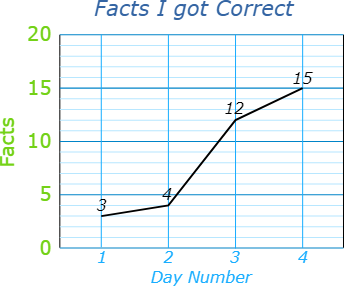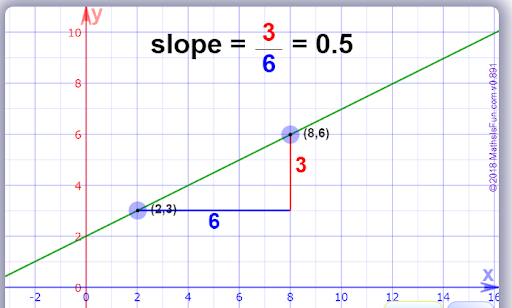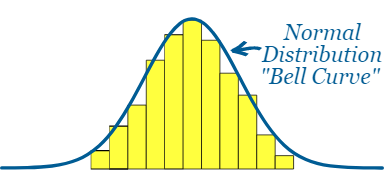




Glossary of ‘G’ Math Terms With Definitions and Examples
There are several words in mathematics that begin with the alphabet ‘g’. Thorough knowledge of these words will help kids lay a foundation for mathematics in the long run. Learning and practicing the math words that start with g will therefore enhance their mathematical vocabulary and prevent them from mixing up the meaning and concept of these words. So here’s a list of the important math words that start with the alphabet ‘g’, along with their meaning in mathematics.
List of Math Words That Start With G
Geometry: It is a branch of mathematics that involves the theories of 2D and 3D lines, shapes, and solids. Geometry covers all the properties, theorems, and construction of these figures.
Gallon: A gallon is a standard unit used for measuring the volume of liquids.
1 gallon = 231 cubic inches = 3.785411784 litres
Gram: A metric unit for measuring the physical quantity, mass.
1 kilogram = 1 gram
Geometric Mean: This is a type of average or mean, in which the quantities to be averaged are multiplied together, first. Then a square root of the product (when two quantities are given), or a cube root of the product (when three quantities are given) is calculated to obtain the final result. The value of the square root or cube root is called the geometric mean.
G.M. of a,b =\[\sqrt{ab}\]
Geometric Progression: It is a sequence of numbers that have a common factor, called the common ratio. Each number in the sequence is multiplied by the common ratio to obtain the next number.
An example of geometric progression: 2, 4, 8, 16, 32.
Graph: It is a visual representation of data, displaying the relationship among variables for different constant values. It comprises a set of points and lines connecting the points. Usually, graphs are plotted in the quadrant of the x and y axes.

Image of a graph
Greatest Common Factor: It represents the number that is a common factor of two or more numbers. To calculate the greatest common factor for a set of numbers, we first need to find all the factors for the numbers. Then, the largest of the common factors of them all will give us the greatest common factor for the given set of numbers. It is also referred to as GCF.
Gradient: The gradient of a line gives the measure of its steepness. It is also referred to as the slope of a line. For example, if a straight line is given on a graph, we will first draw a right-angled triangle taking the given straight line as the hypotenuse. The ratio of the perpendicular to the base of this right-angled triangle will give us the gradient of the given straight line.

Image of the slope or gradient of a line
Golden Ratio: The golden ratio is obtained when a line is divided into two unequal parts, such that, the ratio of the longer part to the shorter part is equal to the ratio of the whole length to the longer part.
The value of the golden ratio is 1.618033989.
Golden Ratio = \[\frac{1+\sqrt{5}}{2}\]
Gross: Gross means to the total amount before any deductions. For example, gross income refers to the amount payable before deduction of income taxes and any other expenses. Another meaning of gross is 12 dozen, that is, 1 Gross = 144.
Gaussian Distribution: It is also referred to as the Normal Distribution. When a representation of data tends to be distributed evenly around a central value, with the central value being the greatest, it is called a Normal or Gaussian distribution. The curve obtained for a Gaussian distribution is closest to the shape of a bell. Hence it is called the bell curve.

Image of a histogram and the Gaussian distribution Curve
Greater Than: The symbol for ‘greater than’ is given as >. When two numbers or quantities are compared, then the bigger number or quantity is called greater than the smaller number or quantity. For example, 6 is greater than 5, that is, 6>5.
Giga: It is used as a prefix to many units, to represent 1 billion, that is, 109. The symbol for ‘Giga’ is G. Gigabyte, gigameter, etc. are common examples of units where this prefix is used.
Conclusion
The above-discussed list of math words that start with g comprise some of the most commonly used mathematical terms. Learning these words will certainly equip kids with an upper hand at understanding the concepts of mathematics covered in their school curriculum. You can also refer to the lists of math words starting with common alphabets like A, B, O, V, etc. on Vedantu and guide your kids through a fun way of learning some fundamental concepts of math.
FAQs on Essential Math Words That Start With G
1. What are some important mathematical words that start with the letter G?
Several fundamental math words that start with 'G' are essential for students. These terms form the building blocks for various mathematical concepts. Some of the most common ones include:
- Geometry: The branch of mathematics concerned with properties of space such as the distance, shape, size, and relative position of figures.
- Graph: A diagram that visually represents the relationship between different sets of data.
- Gram (g): A metric unit of mass or weight. It is a fundamental unit in measurement topics.
- Greater Than (>): A symbol used to compare two numbers, with the number on the left being of higher value than the number on the right.
- Gross: Refers to a total amount before any deductions are made, or a quantity of 144 items (a dozen dozens).
2. What does the 'Greater Than' symbol (>) mean in mathematics?
The 'Greater Than' symbol, represented as >, is a relational operator used in mathematics to show that one value is larger than another. When you see an expression like 'a > b', it means that the value of 'a' is greater than the value of 'b'. For example, in the statement 8 > 5, the symbol indicates that eight is a larger number than five.
3. Which major branch of mathematics starts with the letter G?
The major branch of mathematics that starts with the letter G is Geometry. Geometry is the study of shapes, sizes, the properties of space, and the relative position of figures. It explores concepts like points, lines, angles, surfaces, and solids, which are crucial for understanding the world around us.
4. How are graphs used to represent data in mathematics?
Graphs are powerful visual tools in mathematics used to make complex data easy to understand. They show relationships, patterns, and trends between variables. For instance, a bar graph is used to compare quantities among different categories, while a line graph is ideal for showing how data changes over time. By plotting data points and connecting them, graphs provide a clear, immediate picture of the information.
5. What does the letter 'G' typically represent in different mathematical contexts?
The letter 'G' can represent several things in math, and its meaning depends entirely on the context. In measurement, 'g' is the standard symbol for grams, a unit of mass. In geometry, a capital 'G' might be used to label a specific point on a figure, such as Point G. In higher mathematics and physics, 'G' stands for the Universal Gravitational Constant. Therefore, it's essential to understand the topic being discussed to know what 'G' stands for.
6. How does Geometry help us describe and measure shapes in the real world?
Geometry provides the language and methods to understand our physical world. It helps us in practical ways by:
- Defining Shapes: It gives us names and properties for everything from simple circles and squares to complex 3D objects like spheres and pyramids.
- Calculating Measurements: Using geometric formulas, we can calculate the area of a room to buy carpet, the volume of a box to know how much it can hold, and the perimeter of a field to build a fence.
- Understanding Space: It is the foundation for fields like architecture, engineering, and even art, allowing professionals to design buildings, bridges, and create visually appealing patterns.
7. Why is it important for students to build a strong math vocabulary from an early age?
Building a strong math vocabulary is crucial because mathematics is like a language. When students know the meaning of terms like 'graph', 'geometry', or 'greater than', they can better understand instructions, explain their reasoning, and solve word problems more effectively. A solid vocabulary reduces confusion and anxiety, building a confident foundation that makes it easier to grasp more advanced mathematical concepts in later grades.















